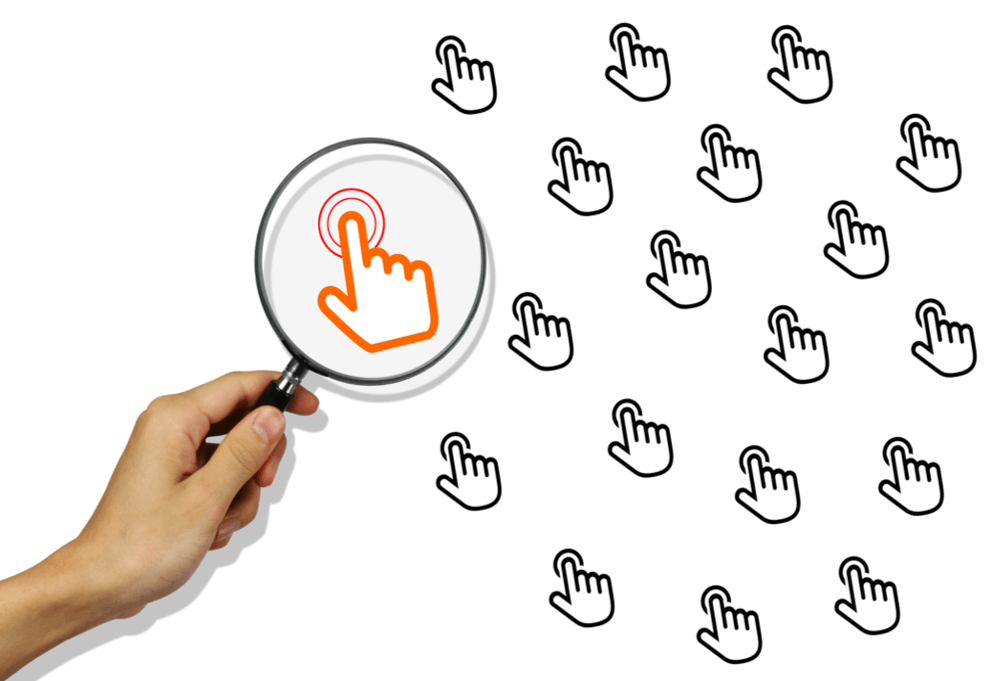Google Ads click spamming - how to recognize that someone is click spamming your ads?

source: own elaboration
Increased costs, significant reduction in the effectiveness of your marketing activities with buying keywords, weaker conversion statistics, not showing ads to potential customers - these are just some of the effects of Google Ads click spamming by unfair competition. But how do you recognize that someone is click spamming your ads?
If you suspect that someone click spam your ads or, worse, if you do not suspect, although you should - necessarily analyze the following symptoms. These factors should warn you that you can be a victim of fraud. You can easily find information about these values in your Google Ads account, also statistics in Google Analytics can be very helpful (if your accounts are not connected).
- A large number of clicks from the same IP address – this is an undeniable argument that someone notoriously clicks your ads from the same device. Of course, this is a rather archaic form of fraud, and now Google's algorithms are currently turning off clicks from the same IP address, but we had to mention it.
- Increasing the number of clicks in the same time periods, if they are unusual for your business – always check in which hours you have the most clicks, and how many sales are generated by clicks in particular intervals. When optimizing campaigns, you should know such statistics and strengthen the promotion in the best (or worst - depending on the purpose of the campaign) time periods. So if the statistics suddenly change - this can be a cause for concern, especially if the increase in clicks at certain intervals is associated with a lower conversion.
- Significant decrease in the conversion rate – unless it results from seasonality, changes on the website or missing items in the assortment. If no changes are made, the goods are available, and the website works correctly on different devices, the drop in conversions can be one of the first and most painful signs of click spamming. This is because the number of sales does not change (or decreases because the ad does not reach the right audience), but the number of actions, in this case clicks, increases (because the artificial ones, generated by the fraudster are added). The person who click spam your ads is not going to buy anything, so sooner or later it has to influence this factor.
- Increased CPC – the more interest in your keywords, the more expensive they get. Unfortunately, artificial clicks (especially unrecognized ones) also affect these statistics, so the CPC of your ads may increase. However, this does not have to be a sign of fraud - the reason may be more active competition or increased popularity of given phrases. It should be disturbing for you, above all, if only the cost of a specific phrase increases (competition probably does not know all the key phrases you buy). However, if your cost-per-click in Google ads is growing quickly - analyze other factors and see if you're dealing with click spamming.
- A significant increase in the number of visits to your website from paid Google ads, with a significant decrease in the average time spent on the site – if you have not carried out any additional campaigns or introduced major changes, yet Google Analytics shows you that many more people come to your page from Google Ads - it may be alarming for you. In this case, be sure to check if the average time spent on the site has dropped for this source. If both of these changes occur at the same time, someone click spam your ads, or your Google Ads are less successful (customers came to your website but do not find what they’re looking for).
- Much more frequent browsing of offer of the same product, especially if it is not new, and previously was not particularly popular. Let's assume that clicks are performed by a person who wants the clicks to look realistic (thanks to that there is no reason to complaint and return your funds). Such a person enters the site and stays on it for some time not to behave suspiciously. However, he works mechanically and do not want to waste time on searching for products. Instead he clicks the first one or the one that is easiest to search for. Sometimes such action is involuntary, our mind naturally directs us to what we already know and replicates the same scenarios.
- More clicks from the same device or group of devices – if you suddenly noticed that the statistics of devices from which your ads are clicked have changed, it may also (but does not have to) be a sign that you are dealing with a fraud. Click farms usually use cheap, older computers, phones and tablets models, so this factor can sometimes identify a similar problem. In addition, even if the device is equipped with a program changing the IP address, still the device data will remain the same. This factor can therefore be useful even if the person, who is click spamming your ads, works alone.
- Increased number of clicks from the same location, if it is not related to your business (office, local shop, etc.), Although this factor is theoretically easily adulterated (IP address, also affects the location data by providing the address to which the IP is assigned), constantly improved geolocation algorithms are able to determine the true location of the click. Alarming for you can be both suspicious traffic from a specific place, as well as a large discrepancy between the location of IP addresses and the geolocation of devices shown by other statistics.
- Identical behavior during individual sessions – if you notice that a large number of visits from paid Google advertising have the same behavior path, this should alarm you, especially if it differs from those from other sources. Of course, some of the differences are normal, but a frequently repeated scheme may indicate the operation of a bot or other program (as well as increased randomness of the user's behavior on the site, if they were previously schematic). This, of course, does not exclude human action - as we have already mentioned, our behavior is often repetitive - even if we do not want to duplicate the scheme.
We must emphasize that none of the factors mentioned above, nor their compilation necessarily means that someone is click spamming your ads. Sometimes the explanation is different, but monitoring of data mentioned above should be done anyway, and in case of any doubts - contact a specialist who will diagnose the fraud using more complex algorithms. TrafficWatchDog analyzes over 200 parameters, including detailed user behavior on the website, to help its clients fight the Google Ads click spamming and other online scams - so if you suspect this problem affects you also - please contact us, we will be happy to help you.

